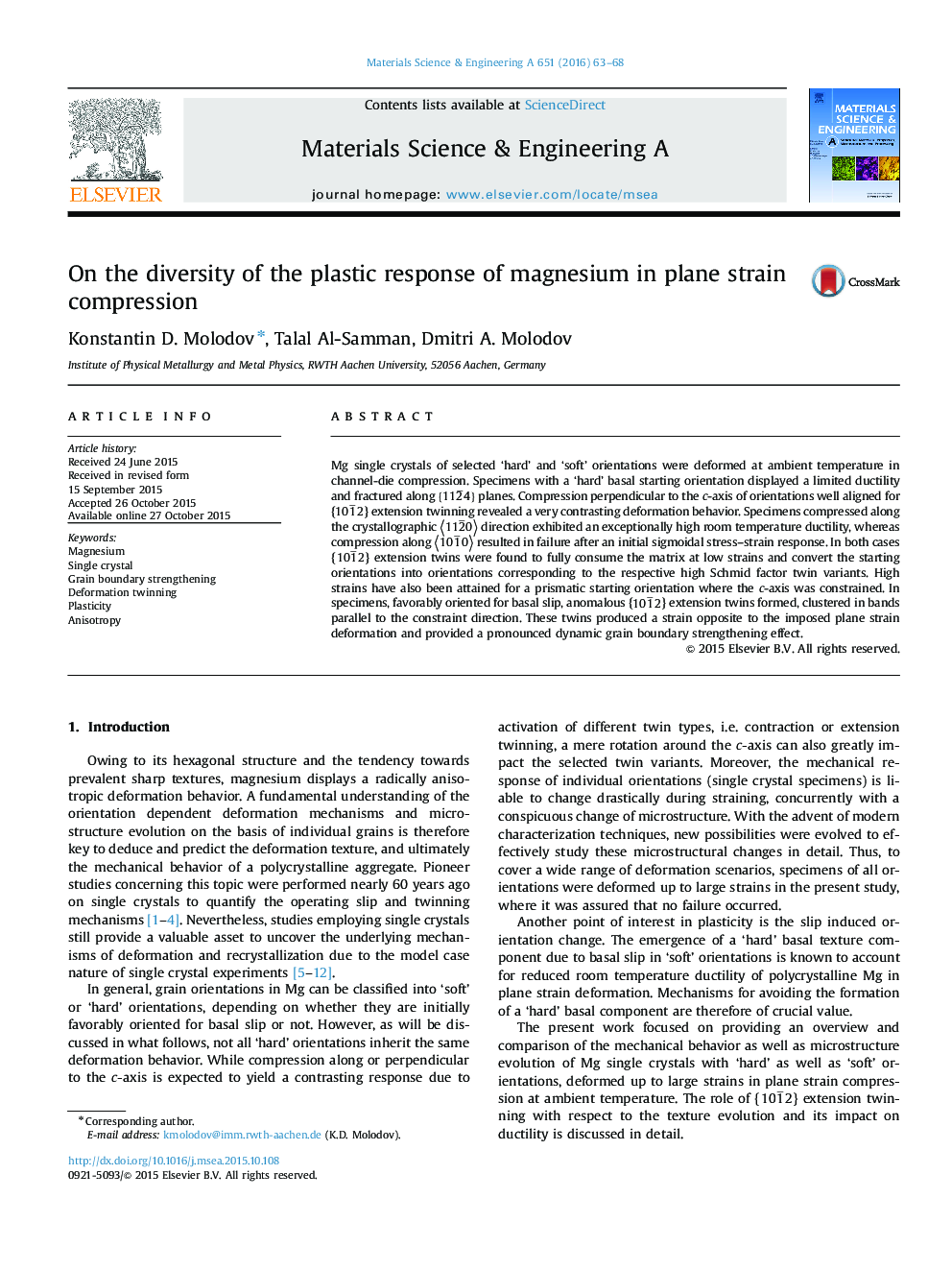| Article ID | Journal | Published Year | Pages | File Type |
|---|---|---|---|---|
| 7975825 | Materials Science and Engineering: A | 2016 | 6 Pages |
Abstract
Mg single crystals of selected 'hard' and 'soft' orientations were deformed at ambient temperature in channel-die compression. Specimens with a 'hard' basal starting orientation displayed a limited ductility and fractured along {112Ì
4} planes. Compression perpendicular to the c-axis of orientations well aligned for {101Ì
2} extension twinning revealed a very contrasting deformation behavior. Specimens compressed along the crystallographic ã112Ì
0ã direction exhibited an exceptionally high room temperature ductility, whereas compression along ã101Ì
0ã resulted in failure after an initial sigmoidal stress-strain response. In both cases {101Ì
2} extension twins were found to fully consume the matrix at low strains and convert the starting orientations into orientations corresponding to the respective high Schmid factor twin variants. High strains have also been attained for a prismatic starting orientation where the c-axis was constrained. In specimens, favorably oriented for basal slip, anomalous {101Ì
2} extension twins formed, clustered in bands parallel to the constraint direction. These twins produced a strain opposite to the imposed plane strain deformation and provided a pronounced dynamic grain boundary strengthening effect.
Keywords
Related Topics
Physical Sciences and Engineering
Materials Science
Materials Science (General)
Authors
Konstantin D. Molodov, Talal Al-Samman, Dmitri A. Molodov,
